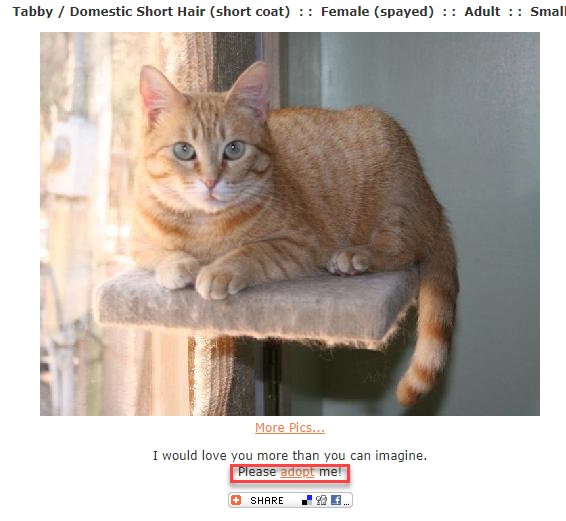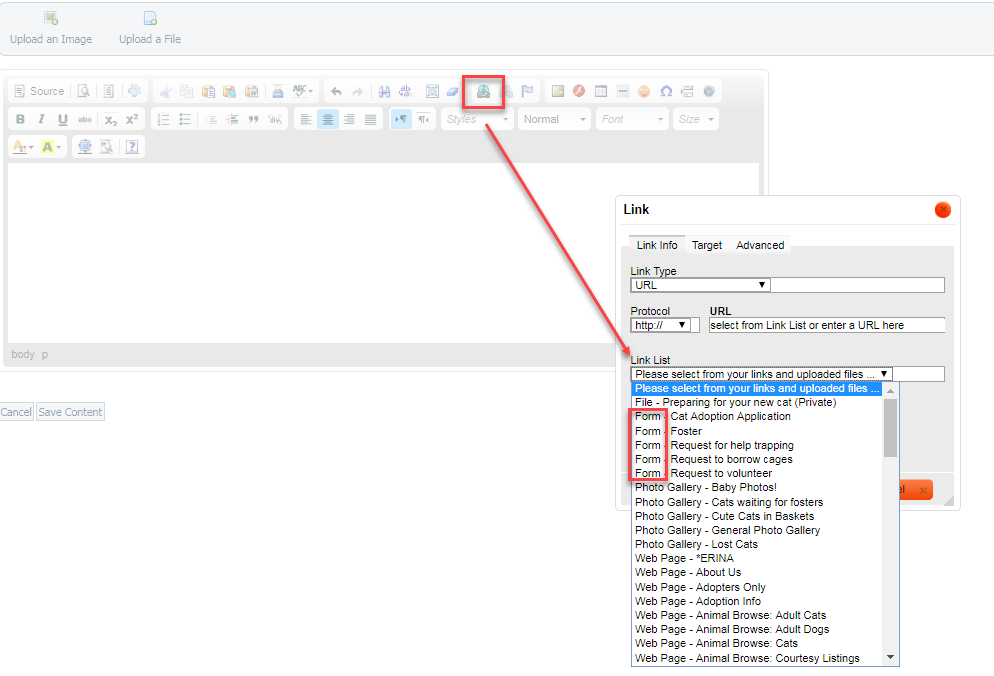Once you've become familiar with your account, you'll want to create at least one online form. Forms can be applications or tracking forms, such as adoption application, foster applications, requests to borrow equipment, requests for trap-neuter-vaccinate-release (TNVR) help. The limit to the forms you can create is your organization's needs.
This guide will walk you through the creation of your first online form and include lots of information about creating any additional forms you need. Each step of the process is detailed for you, and we hope you'll sail through the creation of your first form!
Where do I start?
If this is your first RescueGroups.org account, it would be good to read through our Getting Started with RescueGroups.org guide, particularly these chapters:
- Logging in to your RescueGroups.org account
- Getting familiar with your account interface
- How information is organized in your account
The above chapters are also in this guide. However, the other information found in the Getting Started with RescueGroups.org guide is very helpful if you are starting with us for the first time.
Your online forms are listed in data tables
The information in your account is arranged in data tables. Online forms are no exception. Both your forms and the data you use to create them are saved in data tables and available for your use.
Data tables are simply tables with columns and rows of information. They allow you to manipulate the information in the table, arranging it in a coherent and meaningful way for your purposes. Much of the information collected and managed by the Data Management Service relies on data tables. We'll help you understand how to use the data you collect.
With data tables you can:
- Quickly sort by headings
- Change your view (change to one of the other built-in views)
- Create custom views (change the fields and field order)
- Share your custom view
- Export your view to a spreadsheet
- Add filters to your data table views
All data tables in your account have the same look and feel. Most data tables have the same controls, buttons, and options.
Your online forms are listed in a data table. With it, you can run reports about those forms. For more details about data tables, read the chapter, How information is organized in your account in this guide.
How do my visitors find the forms?
Visitors go to your website and click a link to access your forms:
- If you have the built-in default menu, there is a menu item labeled Forms, which opens a list of all your public forms. Visitors select the appropriate form.
- If you have a custom menu, you can add a menu item with a custom name.
- You can create a link to the adoption form (or any form) on a web page with information about that form. For instance, on the built-in Adoption Information page, you can add some text such as "Click here to fill out an adoption application" and link it to your form.
- If you want the link to the adoption application to appear on each animal bio, you can add a link to the form in the Animal Description header. That header displays on all animals.
Here's an example of the link to the Adoption Information page on an animal's description page.
You can also add a link to your forms and applications from any of your RescueGroup.org Website Service web pages. Visitors simply click the link. Your forms are listed in the drop-down Links menu on each of your Website Service web pages when using the editor. Go to Website > Web Page List. From there, click the edit icon to the left of any of your pages to edit an existing page. The familiar WYSIWYG editor opens. By clicking the link icon, your forms display and you can select the form to link to your text. For instance, in the example above, this organization has text that says, Fill out an adoption application. That text is linked to the adoption application. Under Rose's photograph, they can click the adopt text, go to the Adoption Information page, which has been edited to include a link to the application. For more information about using the WYSIWYG editor, see the chapter Using the editor.
Do visitors have to register to fill out a form?
When visitors arrive at your website, they can choose to register. Registering gives them the ability to access their My Rescue page, where they can see animals they are watching, or they can select Favorite Breeds for notification purposes. Their submitted forms are listed in their My Rescue page as well.
However, you can decide whether to require visitors to register before filling out a form. The first thing you do when you create a form is to create the structure for the form. Part of that structure is whether or not the form requires registration. There are benefits and disadvantages to that requirement. A few of the benefits to you are that you can add the visitors as Contacts and their basic contact information can be automatically added to the form they fill out. You don't need to create questions for that information.
The disadvantage is that some people may not want to register. So the choice is up to you.
Can I change my online forms once they are created?
You can edit your existing online forms with some limitations. The limitations exist because you will want to retain the information given you in forms that have already been submitted with the current form. Therefore, if you want to make major changes, we recommend you create a new form.
What kind of information can I gather on a form?
You can gather demographic information, such as age and gender, personal information such as address or telephone number, and information about animal care. However, you cannot request sensitive personal information such as driver's license number, Social Security number, or credit card numbers.
Per our Terms of Service, RescueGroups.org may not be used for the collection, storage, or processing of Personally Identifiable Information (PII) or sensitive information (in whole or in part), including but not limited to Social Security Numbers (SSN), Driver’s License numbers, state ID information, credit card numbers, mother’s maiden name, financial/bank information, passport information, and healthcare/medical information.
Is data submission encrypted?
The RescueGroups.org website service does not support SSL, so if you are using the Online Forms feature on your RescueGroups.org website, the answers are submitted in clear text. If you are using the Online Forms iFrame service, you could use SSL/HTTPS in the iframe tag.
Regardless, you cannot collect sensitive personal information through the Online Forms service.

